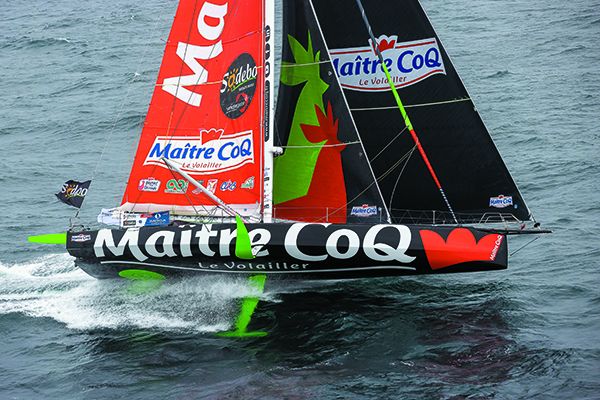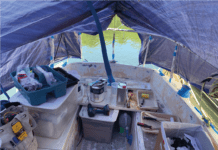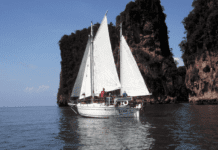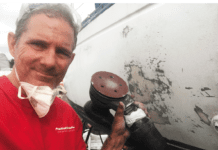In the year 2000, when I stepped off of ye ol’ Tosca and into the roles of full time sailing editor, husband, and father, the world of offshore sailing was going through a rapid transformation.
Most of the changes were technological. Computers were smaller and faster, and the internet reached out into remote places on earth. Cruising sailors suddenly had links to satellites that gave us our position, delivered instantaneous weather forecasts, and offered the opportunity to rebuild the cruising kitty without ever leaving the boat.
In 2000, I could envision a day like today, when the sailor 1,000 miles away from land would be able to easily chat with family and friends, download five-day weather forecasts, and be able to place a distress call with the press of button.
What I did not foresee was 90-foot carbon-fiber boats that can literally fly.
Built in 1937, our 12-ton double-ender did not fly. It was very old and very slow—slow enough for a curious humpback whale to loll alongside and gaze up at us for hours. Our path brought us into contact with people in remote parts of Indonesia, Papua New Guinea, and Borneo, who had little notion of how techology soon would touch their lives.
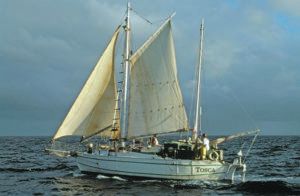
In theory, a cruising sailor inhabits a watery world that is no different from the one sailed by the foiling America’s Cup and Vendee Globe racers. Sure, cruisers and foilers move at drastically different paces, but the myriad creatures that cross our paths, and the wind, sea, and sky that we share are the same.
Though some sailors insist the cruising sailor and Cup boat crowd dwell in separate universes, this perspective misses a great opportunity to realize a common goal. It seems clear to me that any company that puts a billboard on a boat should feel obliged, just as most sailors should, to preserve and protect the ocean that sustains us.
If we shirk this moral imperative—if the dream of sailing away is regarded only as a means to boost the bottom line—the future could bring a painful irony, a world full of magnificent, high-flying boats built by commerce that drains the sea of its mystery and life.





























